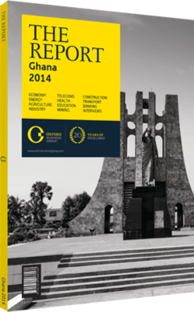The region is returning to the fore as a palm oil producer
The palm oil industry is coming full circle in West Africa. The commodity was first produced in the region as early as the 16th century and commercial trade began in 1820. In the mid-19th century traders transported planting materials from Ghana to Asia, where the climate proved highly conducive for growth. The industry boomed in this new location, leaving Africa behind. Now, West Africa is considered the new frontier for palm oil production. Though Malaysia and Indonesia still dominate the world market, with roughly 85% of total supply, South-east Asian plantation land is becoming increasingly scarce as global demand grows. At the same time, West African production is beginning to take off. “Extraction efficiency technologies are becoming more easily accessible to Ghana’s farmers due to support programmes and incubator funds focused on palm oil production,” said Isaac Gyamfi, managing director of Solidaridad West Africa. “Production could potentially double over the next several years, pending the application of incoming best practices.”
Opportunity
According to the Ministry of Food and Agriculture (MoFA), Ghana currently cultivates 305,758 ha of oil palm and has an estimated annual production of 243,852 tonnes of crude palm oil. Over 80% of the oil is produced by small-scale farmers. Unmet domestic demand, according to MoFA, amounts to around 35,000 tonnes, meaning there is significant potential to scale up local production. The shortfall across ECOWAS is 850,000 tonnes, further illustrating the regional opportunities, without even entering the overseas export market. Yields remain low: the average yield from oil palm farms is around 4 tonnes of fresh fruit per ha, which, according to Solidaridad, equates to 25% of potential production. Lack of adequate farming equipment and training, limited fertiliser usage and low-quality seeds are all contributory factors to this underperformance. The government has many initiatives to support the industry. The President’s Special Initiative on palm oil will support the cultivation of 20,000 ha of small-scale farms for oil production. The Oil Palm Research Institute has expanded seednut (the basic material for palm oil) production capacity from 2m to 5m seednuts per year with the support of the World Bank. The French development organisation Agence Française de Développement has also provided $9m to support a 3000-ha outgrower project in the Upper and Lower Denkyira Districts.
Best Practice
The Roundtable on Sustainable Palm Oil assists farmers in adopting best practices and meeting international production standards. The scheme helps farmers move from subsistence farming to rural entrepreneurship by value chain integration. It uses a certification process that ensures farmers meet minimum standards, while incentivising best practices through financing, training and new equipment.
Top palm oil companies in Ghana include Ghana Oil Palm Development Company (GOPDC), Twifo Oil Palm Plantations, Benso Oil Palm Plantations (BOPP) and Norpalm Ghana. Belgian-owned GOPDC leads in production, operating on 22,352 ha in the Eastern Region with a milling capacity of 60 tonnes per hour. BOPP, owned by Singapore-based Wilmar International, operates Ghana’s second-largest plantation in the Western Region at 6316 ha. Benso was one of the top-performing stocks on the Ghanaian bourse in 2013.
Sifca Group, which owns the largest palm oil refinery on the continent, located in Côte d’Ivoire, announced in July 2013 that it would spend $417m up to 2018 on plantations and factories in Ghana, Nigeria and Liberia. The firm expects to increase its palm oil production by 33% to 400,000 tonnes per year by 2017. Bloomberg reports that Wilmar and Olam are equal owners of a separate company that is a 27% shareholder of Sifca.
Palm oil prices increased steadily since the December 2012 low of just over $700 per tonne to $825 per tonne in April 2014, but as of autumn 2014 they were significantly down. However, they are expected to rise in the long term, with the World Bank estimating that global demand will double by 2020, in large part due to increasing consumption in India and China.
You have reached the limit of premium articles you can view for free.
Choose from the options below to purchase print or digital editions of our Reports. You can also purchase a website subscription giving you unlimited access to all of our Reports online for 12 months.
If you have already purchased this Report or have a website subscription, please login to continue.

